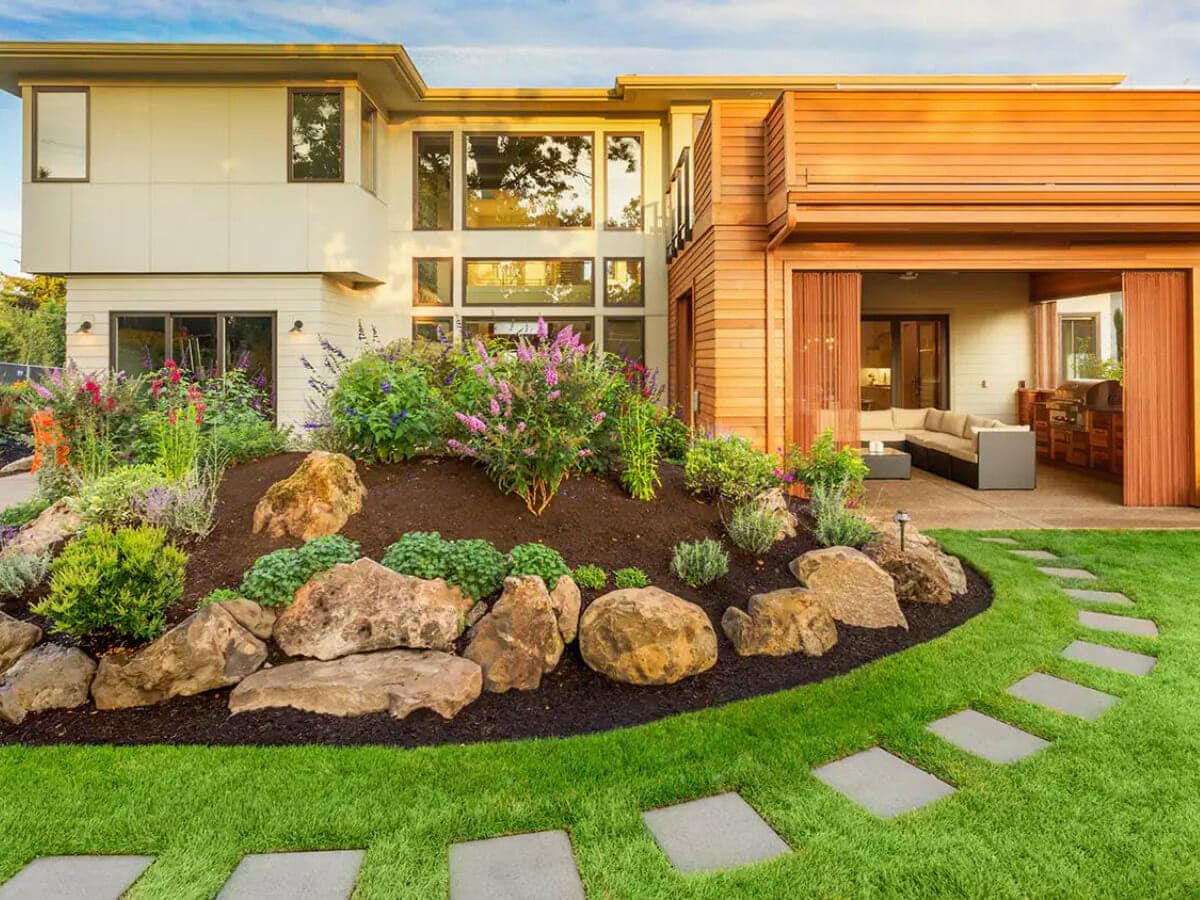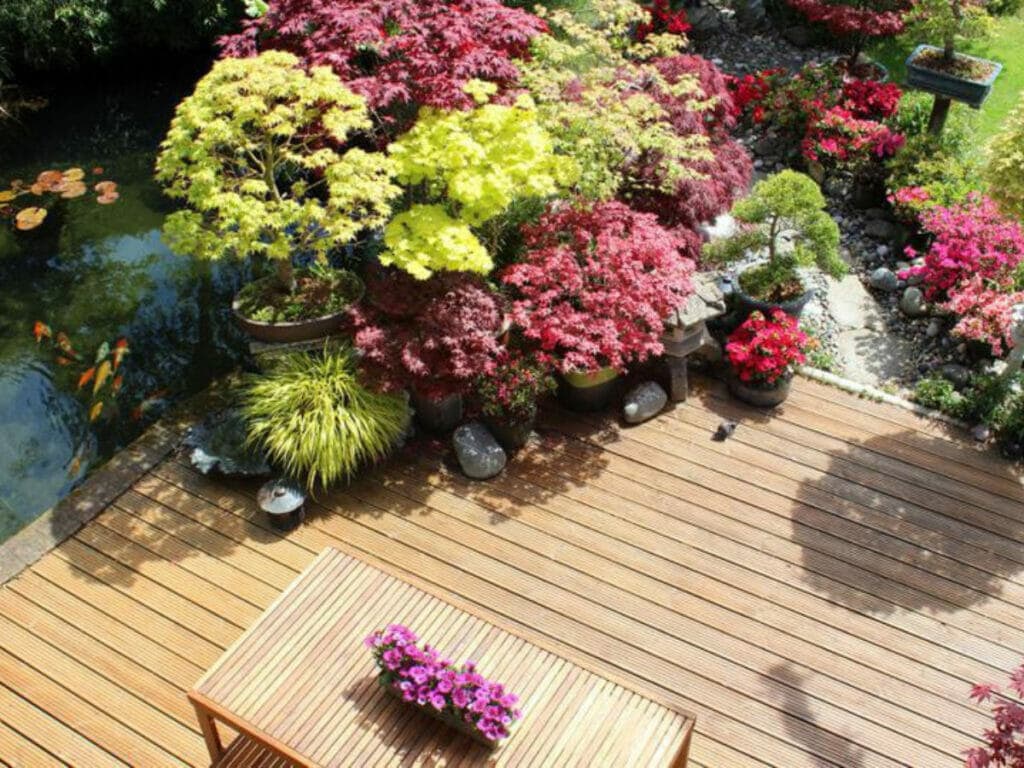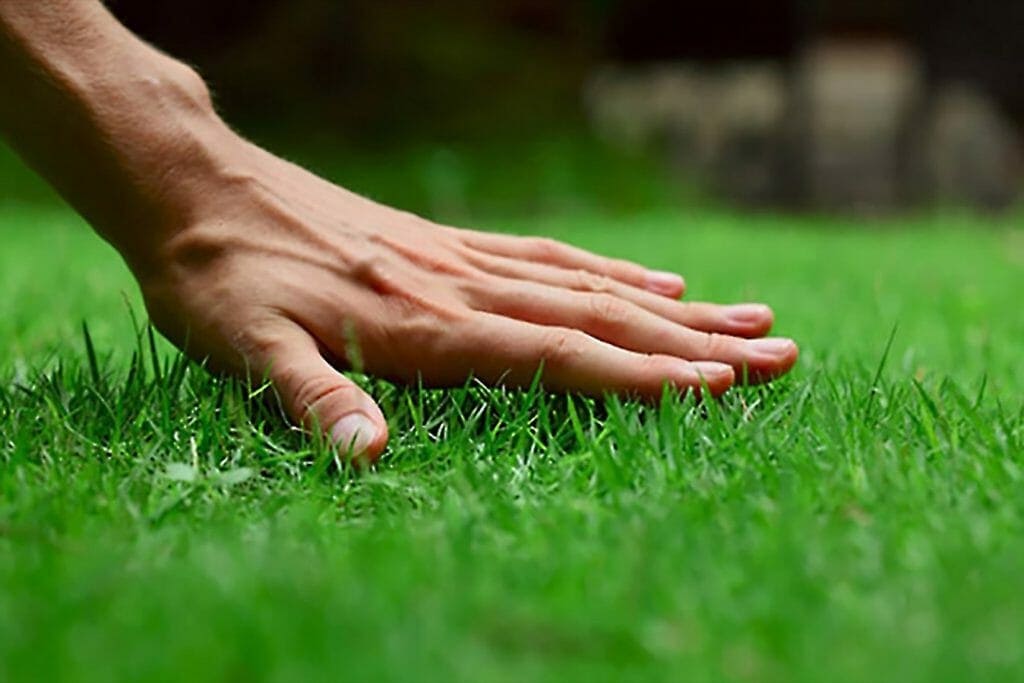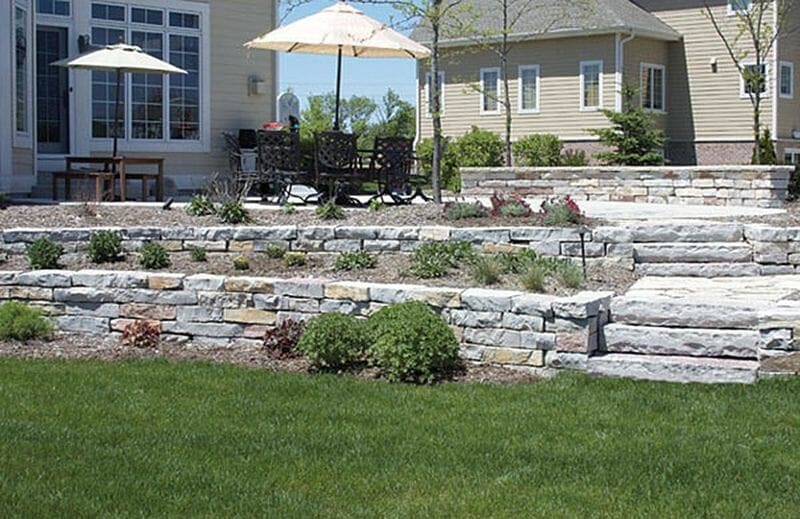When it comes to landscaping, there are a few key components of great landscaping that will make your yard look great. We’ve outlined some of the most important ones below, but feel free to let us know in the comments if you have any questions or need more advice. A well-landscaped yard can really add curb appeal and value to your home – so get started on yours today!
- Mulch: This is probably one of the most important elements of good landscaping. Mulch helps protect plants from heat and cold, moderates moisture levels, and prevents weed growth. You should aim to use about 2-3 inches of mulch in your garden beds and around trees and shrubs.
- Plants: Another essential element of good landscaping is using plants that are appropriate for your climate zone and soil type. Choose plants that will thrive in your region, and don’t be afraid to ask for help at your local nursery or garden center.
- Trees: One final essential component of great landscaping is adding trees to your yard. Not only do they provide shade and beauty, but trees also help reduce energy costs by cooling homes in the summertime. When choosing trees for your landscape, think about both size and shape – you want them to fit in with the rest of your design aesthetic.
If you want to create a stunning landscape for your home, there are several key components you need to keep in mind. By carefully planning and designing your project, you can create a beautiful space that will be enjoyed by everyone who sees it. Here are some of the most important elements to consider when landscaping your property.
Framing Your Home With Fencing
Framing your home with fencing can provide many benefits. It can create a sense of privacy and security, define your property lines, and give your home a finished look. There are many different types of fencing to choose from, so you can select the style that best fits your needs. Wood is a classic choice that can provide a natural look, while metal or vinyl fencing is low-maintenance and durable. If you’re looking for added security, consider installing a chain-link fence. No matter what type of fencing you choose, be sure to get professional installation to ensure it’s done correctly. Framing your home with fencing is an investment that will pay off for years to come.

Hedges: “Living Walls”
Hedges are a type of plant that can be used to create a living wall. Hedges are usually evergreen, which means they will keep their leaves all year round. Hedges can be used for privacy, to produce fruit, or as decoration.
Hedges can be either formal or informal.
- Formal Hedges are trimmed into shapes such as pyramids or sphere
- Informal Hedges are left to grow naturally.
Hedges can be made from a variety of plants, including holly, boxwood, and yew. When choosing plants for a hedge, it is important to consider the size of the mature plant, the growth rate, and the soil conditions. Hedges require regular maintenance, including trimming and pruning. Hedges can be a great addition to any landscape. They provide privacy, fruit, and decoration while also requiring little maintenance.
Foundation Planting of Mixed Shrubs
Foundation planting is the use of decorative plants to enhance the appearance of a house or other building. Foundation plantings are often used to camouflage the base of the structure, provide privacy, and reduce drafts. Foundation plantings can be created using a variety of different shrubs. Evergreen shrubs are a good choice for foundation plantings because they provide year-round interest. Deciduous shrubs can also be used in foundation plantings, but they will lose their leaves in the fall and winter months.
Foundation plantings should be designed to complement the architecture of the house or building. For example, a formal foundations planting would use symmetrical patterns, while an informal foundation planting would use more naturalistic forms. Foundation plantings can be enhanced with the addition of annual and perennial flowers. These plants will provide color and interest for a few months out of the year, but they will need to be replaced annually. Foundation plantings should be designed to offer four-season interest in order to create an attractive landscape all year long.
Home Entryway Landscaping
Home entryway landscaping is the first thing that guests see when they come to your house. It can make a lasting impression, so it’s important to choose plants and design features that reflect your personal style. When selecting plants, consider both flowering and foliage options. Foliage plants add year-round interest, while flowering plants can provide a splash of color during certain seasons.
You’ll also want to choose plants that are appropriate for your climate and soil type. Once you’ve selected your plants, it’s time to start planning their placement. In general, taller plants should be placed in the background, while shorter plants should be in the foreground. Experiment with different arrangements until you find a combination that you’re happy with. Home entryway landscaping is a great way to add curb appeal to your house. With a little planning, you can create an inviting space that reflects your personal taste.
Container Garden Design
Container gardens are a great way to add color and life to any space, indoors or out. But with so many different types of containers and plants to choose from, it can be difficult to know where to start. Here are a few tips for planning and designing a container garden that will thrive.
- First, choose the right container for your space and needs. If you’re limited on space, go for a smaller option like a hanging basket or window box. If you have more room to work with, consider something larger like a raised bed or patio planter. Whatever you choose, make sure it has drainage holes so your plants don’t get waterlogged.
- Next, think about the plants you want to use. Choose a mix of annuals and perennials so you have color all season long. And don’t forget about texture! Mixing plants with different leaf shapes and sizes will give your garden some visual interest. Once you’ve selected your plants, group them together based on their light and water needs. This will make it easier to care for them once they’re in the ground.
- Finally, pay attention to the details. Add finishing touches like mulch, stones, or shells to cover up any bare spots in the soil. And don’t forget to add a sign or statue if you’re using your container garden as part of your business’s landscaping. By following these tips, you can design a container garden that’s both beautiful and easy to maintain.
Idea for a Color Scheme for a Yard
A well-designed color scheme can really make a yard stand out. Here are a few ideas to get you started.
- For a cheerful, sunshiny look, try a combination of yellow and green. Yellow flowers and foliage will really brighten up a green lawn. You could also go for a more subtle look by using different shades of green, or even mix in some blue flowers for a cool, refreshing effect.
- If you’re looking for something a bit more sophisticated, consider pairing purple with green. This classic combo always looks elegant and is perfect for creating an oasis of calm in your backyard. Alternatively, why not try shades of pink and red for a romantic, old-fashioned look?
- Of course, you don’t have to stick to just two colors. Mixing and matching different hues can create a truly unique color scheme that will reflect your personality and style. So have fun experimenting until you find the perfect palette for your yard!
Picture of Hibiscus
Hibiscus is a beautiful flower that comes in a variety of colors. The Hibiscus genus includes both annual and perennial plants, as well as shrubs and trees. Hibiscus flowers are large and showy, with five petals that can be white, yellow, pink, red, or purple. The Hibiscus genus is native to warm climates such as Africa, Asia, and the Pacific Islands.
Plants in the Hibiscus genus are important in many cultures for their medicinal properties and use in traditional ceremonies. In Hawaii, the Hibiscus is the state flower. The Hibiscus is also a symbol of fidelity in China, where the flower is known as the “flower of peace and goodwill.” Whether you’re growing Hibiscus for its beauty or its cultural significance, this versatile plant is sure to add interest to your garden.
Trees in Fall Foliage Colors
One of the most beautiful sights of autumn is the changing colors of the leaves on the trees. Trees in fall foliage colors can range from deep reds and oranges to bright yellows and golds. The exact color of a tree’s leaves depends on the type of tree and the pigments in its leaves. Trees with red and orange leaves usually have high concentrations of carotene, while trees with yellow leaves typically have high levels of xanthophylls. As the days grow shorter and the weather becomes cooler, the chlorophyll in the leaves begins to break down. This process exposes the other pigments in the leaves and creates the stunning array of colors that we enjoy each autumn.
Instant Focal Points: Water Fountains
Water fountains are a beautiful and serene addition to any garden. They provide the perfect place to relax or meditate, and the sound of flowing water can help to mask unwanted noise from outside the home. Water fountains come in a wide range of styles, from simple and understated to ornate and extravagant. Whether you are looking for a focal point for your garden or simply want to add a bit of relaxation, a water fountain is an excellent choice.
In addition to their aesthetic appeal, water fountains can also provide environmental benefits. By circulating the water, they help to oxygenate the soil and support plant growth. They can also attract birds and other wildlife, providing a natural source of entertainment. Whether you are looking for beauty or function, water fountains make an excellent addition to any garden.
Conclusion
Landscaping can be an important part of your home’s appearance, and it can also add value to your property. Whether you are looking to install a new landscape or improve the one you have, there are some key components that make up great landscaping. Here at John French Landscape Design, we have years of experience creating beautiful landscapes for our clients, and we would love to help you too. Let us know in the comments below what kind of landscaping you are interested in, and we will get back to you with more information on how we can help. Thanks for reading!
References:
The Elements of Great Landscape Design
5 Components of Great Front-Yard Landscaping
10 Important Things to Consider When Planning Your Landscape Design



